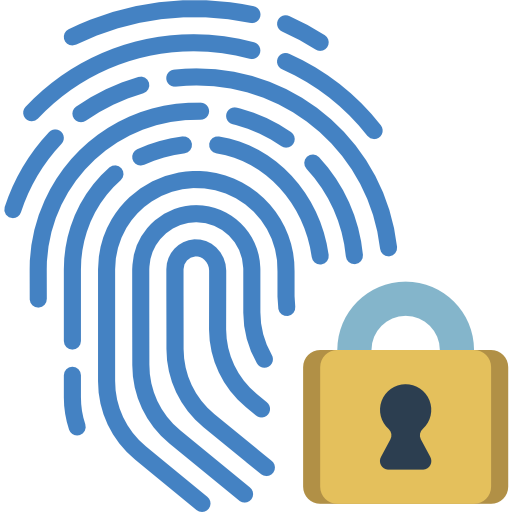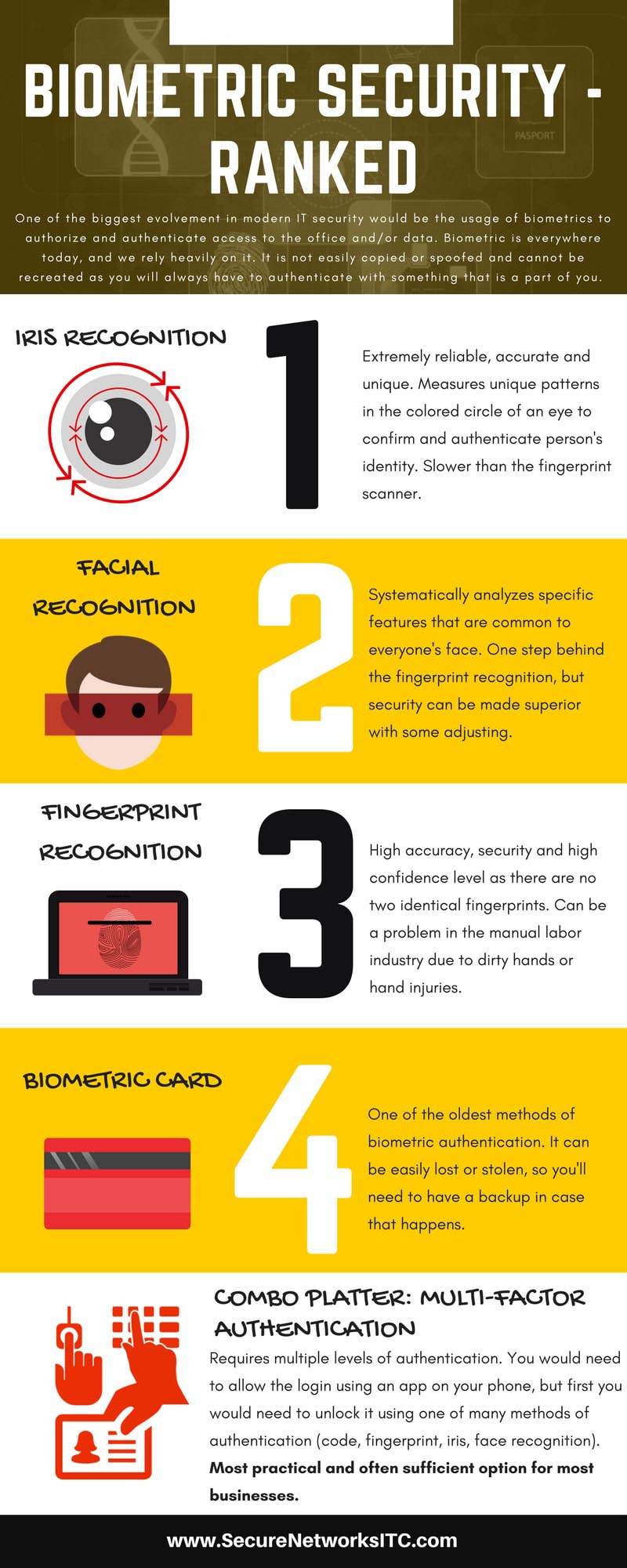#1 Biometric Security in San Diego, CA
Small Business Biometric Security & Digital Surveillance
One of the biggest evolvement in modern IT security would be the usage of biometrics to authorize and authenticate access to the office and/or data. Rest assured our IT security experts and consultants will help you choose the option that fits your organization's needs perfectly.


It doesn't really matter if you are trying to reach a compliance with NIST or HIPAA or if you are just trying to improve the overall security of your IT environment, implementing the latest technology will certainly help you with that. Secure Networks ITC is a trusted IT service provider for small and mid-sized businesses in San Diego for more than 15 years.
San Diego Biometric Security Services : What Do?
- Get to know your business by analyzing its security requirements
- Recommend the right biometric security option or a combo-authentication option
- Recommend, map out and deploy your digital surveillance
- Perform regular checkups and maintenance of your camera systems
- Enhance the security of your facilities and employees

Biometrics are everywhere today, and we rely heavily on it. There isn't a smartphone on the market that doesn't have a fingerprint sensor. A lot of phones have facial detection or iris scanners as well, that really bumps up the security and make a hacker's job difficult. It is not easily copied or spoofed and cannot be recreated as you will always have to authenticate with something that is a part of you. In addition to this, IT biometrics are usually used in conjunction with the traditional form of authentication - complex password. Speaking of HIPAA and NIST, did you know that a camera system is an integral part of the compliance? It not there just for show and it is extremely important to have one at your office. Monitoring your office 24/7 is a great security addition if your data gets compromised by the people you work with or by illegal entry. Not only that, it can provide you with insight of the responsibility of your coworkers. You can always check if someone is using external devices to copy or move data, or even loading their music library on to a work computer. Any external device can carry viruses or many different malwares. Both camera surveillance and biometric security exist for a sole reason – to protect you and your business data in a more reliable way. It is understandable if you are not familiar with all the options out there, the differences and what would be suitable for YOUR business. And you don't need to be. In case you'd like to learn more regarding the options that our experts recommend, read right through! And in case you are eager to install a reliable security, system and protect your premises as soon as possible, just contact us below or give us a call. We'd love to chat about your business and security options.
TALK WITH TOP TRUSTED SAN DIEGO CYBERSECURITY EXPERTS
(858) 769-5393
Biometric Security Ranked by Secure Networks ITC
Currently, iris scanners hold the greatest levels of accuracy and extremely low rates of errors but is slower than fingerprint scanners which are widely available today. The biometrics measure unique patterns in the colored circle of an eye to confirm and authenticate person's identity as human iris remains unchained during the lifetime. It is, therefore, extremely reliable, accurate and unique. Just to give you an idea regarding how reliable it is, iris biometrics are used to protect CERN, the home of Large Hadron Collider, so that's how powerful identification it is. Besides, CERN, iris recognition is used for boarder control on airports and seaports, as an access control in medical institutes, laboratories and factories, identification for ATMs, for controlling restricted access to police evidence rooms, etc.
#2 Facial Recognition
When it comes to safety, facial recognition is one step behind the fingerprint recognition. It does, however, have all kinds of different options, such as the 3-D mapping, so the security can be made superior with some adjustment. It has been around for decades, but it only now became accurate enough to be used in, let's say secure financial transactions. The technology for recognizing faces is expanding quickly and is changing the way people interact with banks, stores, transportation service, etc. Besides opening your office, laptop or smartphone with your face, the technology is finding more and more convenient applications. Answer this: are you the kind of person that hates carrying cash around, so the card is how you roll? Well, imagine not even carrying a card anymore – in China, for example, your face is enough to pay dinners, make purchases, get transportation tickets, etc.#3 Fingerprint Recognition
Fingerprint recognition is definitely one of the most popular biometric modalities used for personal identification and authentication applications, such as physical access control, attendance, customer and identification. The method gained great popularity in recent years due to extensive use in cell phones and national ID programs. Unlike iris recognition, fingertip recognition doesn't require user to remain motionless while the scan is performed. All the user needs to do is touch the fingerprint scanner and the authentication will be performed. As there are no two people on Earth that have same set of fingerprints, fingerprint recognition is extremely reliable. It does, however, have some limitations. For example, in case you work in a certain industry such as the manual labor industry, miss-readings can occur due to obvious reasons.#4 Biometric Card
Of course, having a fingerprint sensor or a 3D camera for facial recognition is not an option all the time, so you could use a biometric card that holds your information that is used when authenticating. It is one of the oldest methods of biometric authentication and has been around for years. It is even used when making payments using your credit card. Keep in mind, however, that a biometric card can be easily lost or stolen, so you'll need to have a backup in case that happens.Most Practical Option for Businesses: Multi-Factor Authentication
The biggest advancement when it comes to bridging the gap between biometrics and traditional methods of authentication, would be the multi-factor authentication method. You'll not only be required to type in your valid password, but also do a secondary authentication. There are many different solutions, and most will involve the usage of your smartphone, as the most crucial gadget you own. This option proved itself as the option best suitable for wide variety of businesses and in most cases, it is quite sufficient. The multi-factor, as the name suggests, requires multiple levels of authentication. Not only would you need to allow the login using an app on your phone, but you would need to unlock it first using one of many methods of authentication (code, fingerprint, iris, face recognition).


